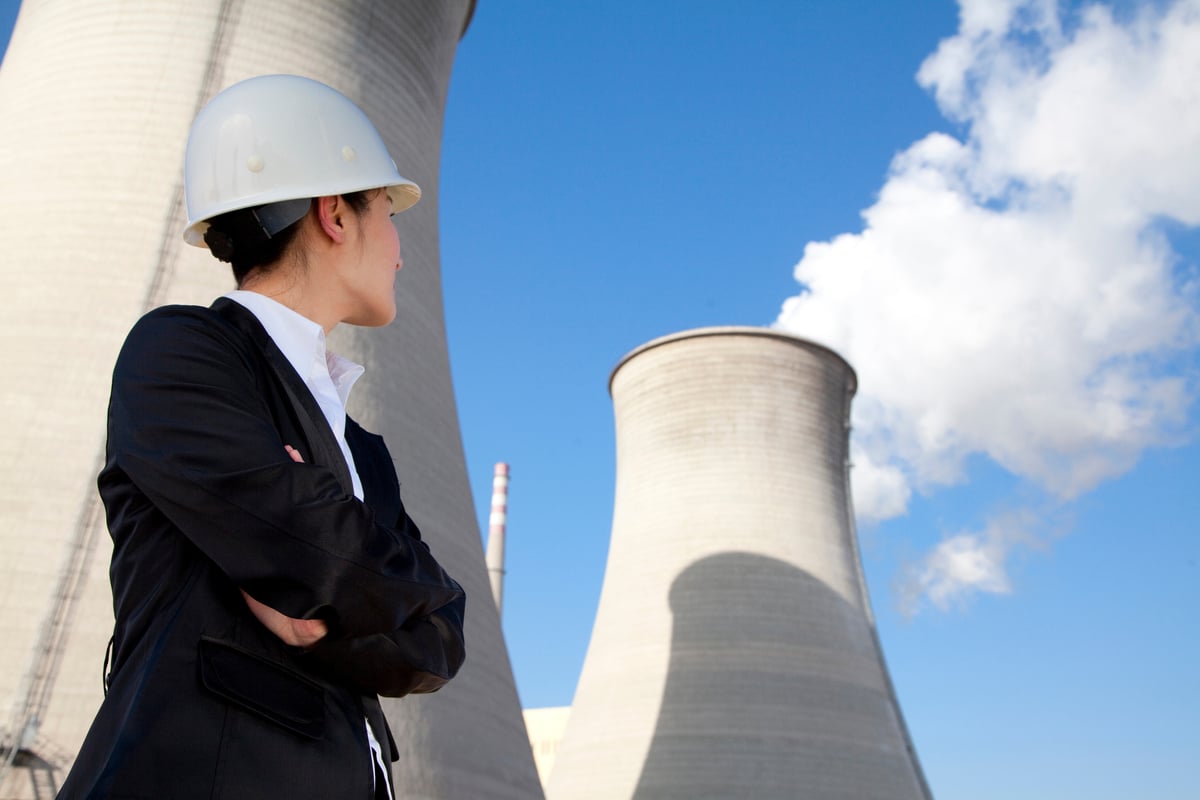
The Diablo Canyon nuclear power plant. Image source: Tracey Adams/ Flickr.
This summer California is mired in a historic drought. There's some help on the way in the form of a built-for-purpose desalination facility under construction in Carlsbad, near San Diego. It's a step in the right direction, but the energy-intensive desalination project will cost $1 billion and produce just 10% of the county's water needs.
Until the Carlsbad Desalination Project comes online later this year, the largest desalination facility in the state of California is actually the Diablo Canyon Nuclear Power Plant owned and operated by PG&E Corporation (PCG +0.93%). Desalination needs a lot of energy, and nuclear power generates a lot of energy. But would citizens ever accept nuclear desalination facilities in California to create carbon-free energy and safe drinking water?
Desalination by the numbers
A desalination facility pumps seawater through miles of pipes and then pushes it through specialized membranes in a process called reverse osmosis. Water molecules can pass through the membranes, but larger molecules such as salt get stuck on the surface. And boom! Fresh water!
It seems simple, but pushing millions of gallons of water per day through membranes requires massive amounts of energy, which is what makes desalination very expensive compared to other water purification processes. According to MIT Technology Review, using current technology, it takes up to 23x more energy to produce an equivalent amount of safe drinking water from seawater than from water originating in a lake or river. And desalination takes up to 18x more energy than groundwater purification.

U.S. officials tour a desalination facility in Israel, the world leader in desalination. These are the membranes at the heart of reverse osmosis. Image source: U.S. Embassy Tel Aviv/ Flickr.
Of course, expensive water is cheaper than no water, which is now the reality facing drought-stricken residents and businesses in California. That's why San Diego County will purchase desalinated water from Carlsbad for $6.14 per thousand gallons -- 80% more than what the county currently pays for water.
Expensive nuclear power couldn't possibly be any cheaper, right? Actually, PG&E Corporation sells desalinated water from Diablo Canyon to local fire departments for just $3.34 per thousand gallons. Still relatively expensive, but roughly the same price San Diego County pays for water today.
It's important to note that Carlsbad will produce nearly 50 million gallons of fresh drinking water everyday, while the nuclear plant at Diablo Canyon can only produce a maximum of 1 million gallons per day (40% of which is used on-site). That makes it an insignificant revenue stream for PG&E Corporation, but, hey, California needs more water and more energy. Could nuclear desalination be the answer?
Nuclear renaissance through desalination?
One of the biggest disadvantages of traditional nuclear power plants, which are large and centralized, is the massive upfront construction expense. For instance, the Vogtle expansion being undertaken by Southern Company in Georgia is estimated to cost up to $18 billion. There are permitting, licensing, approval, regulatory, construction, upfront decommissioning, and other fees and expenses. Just as desalination is the most expensive water source, nuclear is the most expensive electricity source.
But if you combined the two processes each would help to offset the cost of the other. Desalination processes would have an ample supply of energy, while nuclear power plants would gain an important new revenue stream to increase their value proposition. Residents would gain carbon-free energy and tens or hundreds of millions of gallons of fresh drinking water every day. Of course, for the foreseeable future, it likely makes more sense to build or expand desalination operations at existing nuclear power facilities.
New facilities could be built in the future, but would need to leverage different technologies to make the best case economically. Nuclear desalination could be made even cheaper by deploying low-cost, next-generation small modular reactor designs and/or by building floating, offshore nuclear power plants. It sounds like a stretch today, but when 97% of the water on your planet is saltwater (and another 2% is locked up in glaciers), it begins to sound like a feasible future.
What does it mean for investors?
At the moment, there are no plans for nuclear desalination to be deployed on a large scale. But local officials are working with PG&E Corporation to make good use of the 600,000 gallons of daily fresh water capacity currently going unused and to possibly expand the capacity beyond 1 million gallons per day. Investors may see more Californian nuclear power plants begin to entertain the idea of building on-site desalination facilities. How big will they be? Does this mark a turning point in the public's attitude toward nuclear energy? Could this revive the nuclear renaissance? It's still too early to tell, but this is an interesting development to watch.






